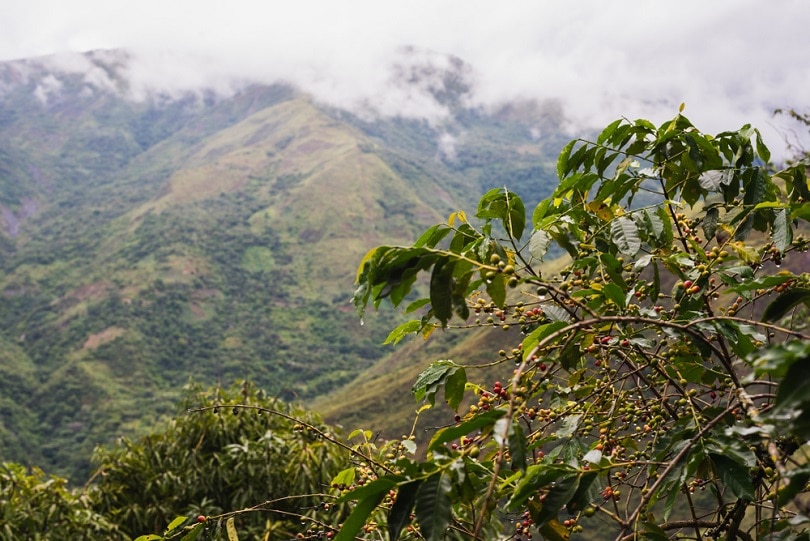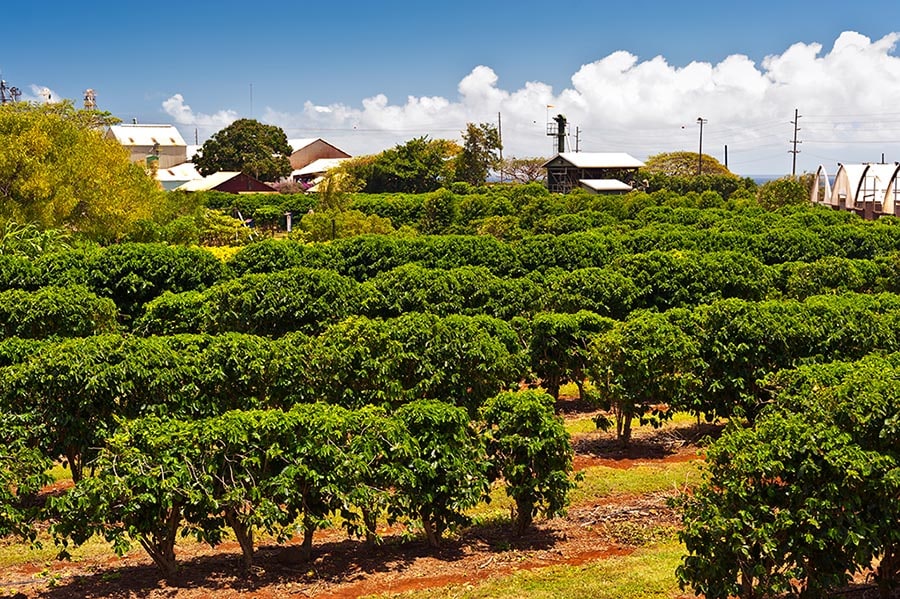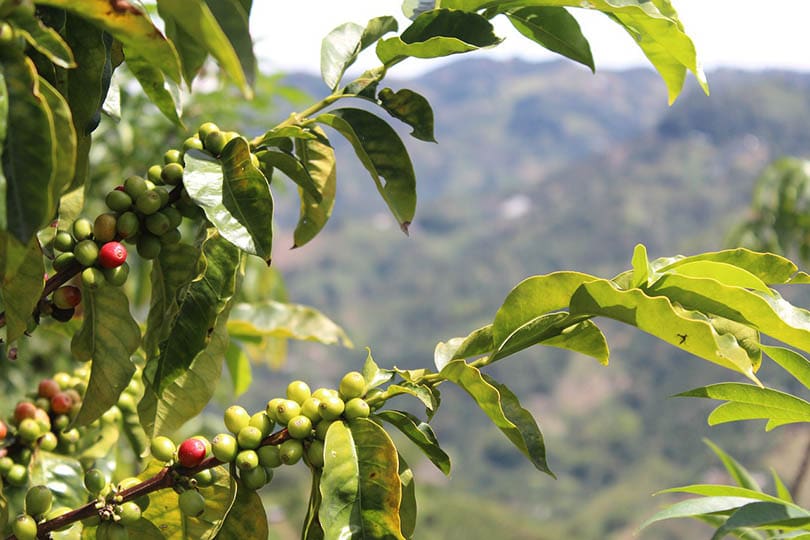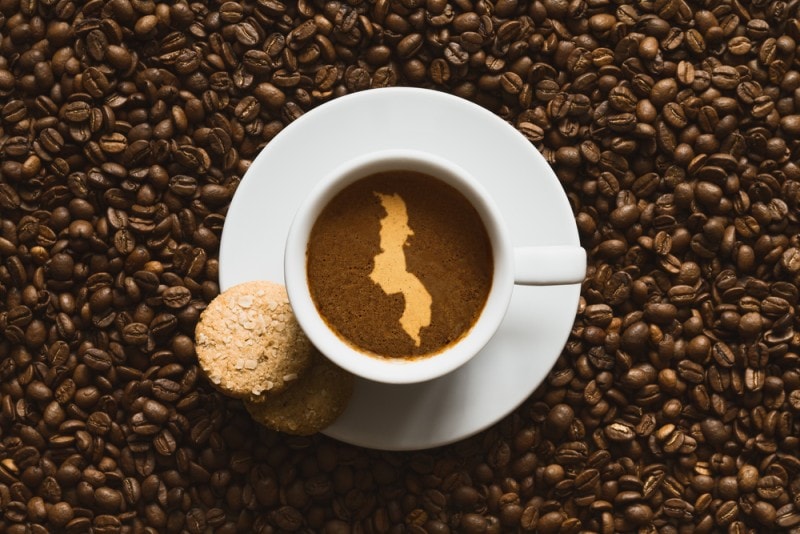
Global warming, regardless of the causes, is an increasingly serious issue, affecting everything from ecology to agriculture. It’s an issue that the scientific world has been tracking for decades, though only recently has it become front and center in mainstream society. With temperatures slowly but steadily rising and weather patterns changing sporadically, the effects of these changes are showing their impact in many different industries.
Unfortunately, one of the industries affected by global warming is coffee farming and production, especially in areas that already struggle with economic and environmental problems. Even regions that grow coffee at elevation, which has more predictable weather patterns, are struggling to produce high-quality coffee beans from the rising temperatures. Global warming may not seem like a coffee problem, but it has the potential to drastically change it as we know it.
Coffee plants already face hardships. Disease, deforestation, and infestations have always made growing healthy plants difficult, but climate change may become the biggest obstacle the coffee industry has ever had to face. According to scientists, without implementing the proper measures now, our beloved drink could fade from our lives and our cups.

Coffee’s Ideal Climate
Coffee plants can be quite difficult to work with. This is especially true for Arabica coffee which makes up the majority of the globe’s coffee production each year. These plants need to be planted at proper elevations and in the right conditions. The temperamental Arabica plant needs shade to keep it protected from the sun’s damaging rays while also requiring proper amounts of rainfall per growing season. This is why South America is considered a prime territory for coffee growing.
Weather prediction is part of the game when it comes to coffee farming, which helps a farmer know how the harvest will go each year. Coffee plants are temperamental and delicate with specific growing needs, especially Arabica plants which make up over 70% of the global coffee production each year. They can handle direct sunlight, but Arabica plants at elevation are grown in shade to protect them from the sun. They also need adequate rainfall, which is why areas like South America are so favorable for coffee farming. Coffee plants need a balance of sunlight and rain, which is why global warming is an issue. Without the proper balance, the coffee plants don’t produce as high-quality beans as they should.

Coffee and Climate Change
Before diving into global warming and sifting through the thousands of possible causes, it’s important to understand the relationship between coffee and climate change. 30 years ago, growing coffee at elevation was not even possible in most areas, due to the low temperatures and the lack of necessity to move the plants higher.
As the global temperature started to rise, farmers in mountainous actually benefitted from the temperature increase. It allowed them to grow coffee in higher places because it was the perfect temperature for coffee plants to flourish, without the unpredictable rains and weather patterns closer to sea level.
However, the increase in temperature hasn’t stopped, so the ideal locations to grow coffee beans are slowly slipping away. With more unpredictable rains causing plants to rot or mold from excess water and hotter temperatures burning the delicate plants, the sweet spots on the mountains are becoming bitterer than the beans they’re growing.
Yet, hundreds of coffee farms across the world have no elevated plots or no other places to plant, while also dealing with climate change and global warming. Since the weather is becoming harder to predict, coffee farmers are struggling to produce the amount of coffee they once did even as little as 10 years ago.
It’s also important to state that many coffee-producing countries are not as economically strong as others, so losing any product can be a life or death situation. It can cause a drop in overall global coffee production for that country, causing even more economic strife than before. In other words, climate change and global warming are not only huge factors in yearly yields of coffee, but they can also easily wipe out an entire coffee plantation with one drought or flood.
The Effects of Rising Temperatures on Coffee Plants
While we may go through our days not realizing the effects that higher temperatures are having on our lives, other parts of the world aren’t so lucky. In the warmest areas, where coffee plants thrive, the rising temperatures are bringing more problems than most people have anticipated. Possibly the most damaging for coffee farms is drought.
Many coffee farms are finding themselves facing localized droughts that can be devastating to crops. While irrigation techniques can be implemented, if the region itself is struggling with a healthy water supply, the likelihood of it being used for farming is far-fetched. This is why many smaller coffee farms find themselves losing substantial amounts of their crops each year.

Wild Coffee Plants May Suffer the Most
You may wonder why wild coffee plants are so important with Arabica and Robusta being the most popular coffee beans available. The answer is simple, genetics. Wild coffee plants are used to help make the quality of commercial plants better. By using wild coffee plants, scientists and coffee specialists can crossbreed to create stronger lines of plants, many of which may have a better chance at withstanding the environment. If the wild plants aren’t able to survive the temperatures and effects of the climate, this process may end with no chance of making commercial plants stronger.

Other Climate Issues Affecting the Coffee Industry
While the heat rising brings drought and higher temperatures to the forefront, those aren’t the only symptoms of global warming. Another issue coffee farmers are experiencing is the death of insects that pollinate the plants. The loss of these insects can be directly attributed to the rising temps and droughts plaguing much of the world. If the plants can’t pollinate, a healthy harvest isn’t possible.
Disease is the other issue on the rise thanks to climate change. Certain fungal diseases seem to be thriving in the new, more intense, temperatures coffee plants find themselves growing in. With so many small farms unable to afford proper protection from these types of diseases, they lose lots of their harvest and livelihoods each season.
The Little Guy Is Hit the Hardest
With small coffee farmers making up nearly 70% of the coffee grown each year, they are set to be the hardest hit if climate change doesn’t slow down. These small farmers are incapable of paying for expensive irrigation systems to help their crops. They rely on Mother Nature and the rains they hope come each year. With climate change becoming so prevalent, those rains aren’t a guarantee. This leaves many of these farmers struggling to keep their crops sustainable and producing quality beans. Without strong crops each year, these small farmers could lose their lands, homes, and livelihoods.

What Could Happen to Coffee in the Near Future?
You may be curious how climate change will affect you and your coffee drinking habit. It’s simple, really, the harder it becomes to grow coffee plants, the harder it will be to purchase it at a price you can afford.
If climate change takes root and damages the coffee industry like many are predicting, coffee will become a luxury, not our daily go-to. When this happens, we’ll be paying far higher prices for lower-quality coffee to try and ease our cravings.
There’s no sure way to know what will happen in the future in terms of global warming and coffee, especially with the mainstream society starting to stand up against climate change nay-sayers. While we can guess what will happen to our beloved coffee, there are some predictions as to what could happen:
- Farmers Switch to Robusta Beans – Arabica beans have been the big seller globally, but the problem is with the delicate nature of the coffee plants. One prediction that is already starting to happen in certain areas is that farmers are ditching Arabica plants for Robusta, the second most popular coffee bean in the world. Although Robusta beans are not as tasty and can be bitter, some farmers would rather deal with shorter growth times and less fussy plants to ensure a more bountiful harvest. However, Robusta beans are not invincible and can still burn in excessive heat.
- Huge Drop in Overall Coffee Production – As we stated above, there’s a scary yet seemingly realistic prediction that a major loss in coffee production will happen within the next three to four decades. Not only will coffee be more expensive, but it may also not even taste as good as it used to due to climate change and global warming. Even if the switch to Robusta is the future, the coffee we enjoy now may never be around again.
Is Anything Being Done to Stop the Effects of Climate Change on the Coffee Industry?
You may be wondering what, if anything, is being done to help try and stop the effects of climate change on the coffee industry. Unfortunately, there aren’t many governments stepping in to help. This leaves most of the research and work to the coffee industry itself. With several companies conducting their own research into creating drought and climate-resistant plants, they are hoping to make the effect less damaging. Luckily, seed preservation, monitoring, and conservation have been underway for years in hopes of being prepared for when things get worse.

Conclusion
Global warming is a serious issue that is impacting many farming industries, coffee included. The rising temperatures and the sporadic weather patterns are making it difficult for farmers to produce high-quality coffee, which will only grow worse as global warming continues to heat the earth. While we can be hopeful that it won’t continue to impact the coffee industry, the reality is that it will become more expensive as time goes on.
Featured Image Credit: PhotosOfTheWorld, Shutterstock
Table of Contents
- Coffee’s Ideal Climate
- Coffee and Climate Change
- The Effects of Rising Temperatures on Coffee Plants
- Wild Coffee Plants May Suffer the Most
- Other Climate Issues Affecting the Coffee Industry
- The Little Guy Is Hit the Hardest
- What Could Happen to Coffee in the Near Future?
- Is Anything Being Done to Stop the Effects of Climate Change on the Coffee Industry?
- Conclusion















